Contents [hide]
- 1 Revolutionizing Fashion with Men’s Lingerie
- 1.1 Exploring the Rise of Men’s Lingerie and Breaking Gender Norms
- 1.2 Historical Perspective: The Evolution of Men’s Fashion and the Rise of Gender-Fluid Clothing
- 1.3 The Cultural Shift: How Society’s Perception of Masculinity is Changing
- 1.4 The Rise of Men’s Lingerie: Fashion Brands Embracing Inclusivity and Diversity
- 1.5 Breaking the Stigma: Challenges and Controversies Faced by the Men’s Lingerie Industry
- 1.6 The Impact on Gender Norms: How Men’s Lingerie is Challenging Traditional Gender Roles
- 1.7 Fashion Influencers and Celebrities: Promoting Men’s Lingerie and its Acceptance
- 1.8 Consumer response: The Growing Demand for Men’s Lingerie and Changing Shopping Patterns
- 1.9 The Future of Men’s Lingerie: Predictions and Trends in the Fashion Industry
- 1.10 Conclusion: Embracing Individuality and Equality in the World of Fashion
- 1.11 Wild Secrets
- 1.12 Men's Sexy Lingerie and Sexy Underwear
- 1.13 The Ultimate Guide to Finding the Perfect Men’s Panties
- 1.14 Do Women Like Men Crossdressing?
Revolutionizing Fashion with Men’s Lingerie
Exploring the Rise of Men’s Lingerie and Breaking Gender Norms
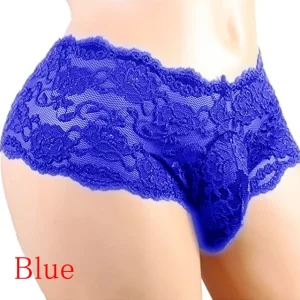
In the world of fashion, gender norms are constantly being challenged and pushed aside. One significant trend that has emerged in recent years is the rise of men’s lingerie. Gone are the days when undergarments were strictly reserved for women.
Men are embracing their sexuality and wanting to feel sexy and confident in what they wear, even in the most intimate of settings. This revolution in fashion is more than just a mere fad. It represents a larger societal shift towards accepting and embracing diversity.
Men’s lingerie offers men the opportunity to express their individuality and break free from traditional stereotypes. It’s a way for them to explore their sensuality, feel empowered, and celebrate their bodies. While the concept of men’s lingerie may still be relatively new to some, it’s gaining popularity and acceptance in the mainstream.
With celebrities and influencers proudly sporting these garments, it’s clear that the boundaries of fashion are expanding, and gender norms are being challenged. In this article, we will delve deeper into the rise of men’s lingerie, exploring its cultural significance, the brands leading the way, and why this trend is here to stay. Join us as we dig into this intriguing fashion revolution.
Historical Perspective: The Evolution of Men’s Fashion and the Rise of Gender-Fluid Clothing
The evolution of men’s fashion reflects a rich tapestry of cultural shifts and aesthetic developments. From the functional attire of early civilizations to the ornate expressions of status in the Renaissance, men’s clothing has been a marker of social identity and change.
The 20th century, particularly, witnessed a radical transformation as societal norms began to relax, allowing for more expressive and diverse sartorial choices. This period saw the introduction of casual wear and a departure from rigid formality, setting the stage for today’s fashion landscape where gender-fluid clothing is gaining prominence. The rise of gender-fluid fashion marks a significant shift towards inclusivity and self-expression, challenging traditional gender norms and expanding the definition of personal style.
Designers are increasingly creating collections that transcend gender binaries, offering garments that can be worn by anyone regardless of their gender identity. This movement not only reflects the changing attitudes towards gender but also underscores the dynamic nature of fashion as a form of personal and collective identity. The integration of menswear and womenswear at events like London Fashion Week exemplifies this trend, showcasing a future where fashion is less about gender and more about individual expression.
The Cultural Shift: How Society’s Perception of Masculinity is Changing
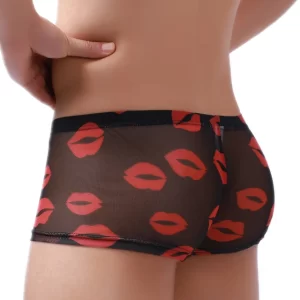
The perception of masculinity is undergoing a significant transformation in contemporary society. Traditional views that once defined masculinity in terms of strength, stoicism, and dominance are being reconsidered. There’s a growing recognition of the importance of vulnerability, emotional intelligence, and empathy in defining what it means to be masculine.
This shift is reflected in various aspects of culture, including media, literature, and public discourse, where there’s an increasing portrayal of men as multidimensional beings who embrace a range of emotions and roles.
The redefinition of masculinity is not just a social trend but also a necessary evolution, as rigid gender roles have been linked to negative outcomes for both men and women. By fostering a more inclusive understanding of masculinity, society can benefit from healthier relationships and a more equitable distribution of emotional labour.
The Rise of Men’s Lingerie: Fashion Brands Embracing Inclusivity and Diversity
The fashion landscape is undergoing a transformative shift with the rise of men’s lingerie, a segment that is breaking traditional gender norms and promoting inclusivity. This evolution reflects a broader trend in the industry towards gender-neutral fashion, which is gaining momentum as societal attitudes towards gender identity and expression continue to evolve.
Brands are increasingly recognizing the importance of catering to a diverse customer base, offering designs that challenge the conventional demarcations of gendered clothing.
The movement towards inclusivity is not just about expanding product lines but also about fostering a culture of acceptance, where clothing is a form of self-expression that transcends traditional boundaries. As this trend grows, it has the potential to reshape the industry, encouraging more brands to embrace diversity in their designs and marketing strategies.
Breaking the Stigma: Challenges and Controversies Faced by the Men’s Lingerie Industry
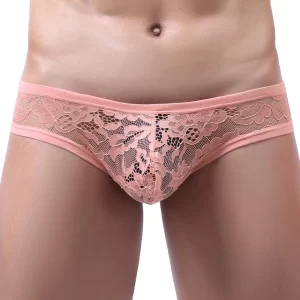
The men’s lingerie industry is navigating a complex landscape of challenges and controversies as it works to break the stigma surrounding its products. One of the primary hurdles is overcoming societal perceptions that question the masculinity associated with men’s lingerie.
Despite this, the industry is witnessing a positive shift with an increasing demand for comfort, safety, and style, which is driving innovation and diversity in product offerings.
The rise of e-commerce has also played a significant role in this transformation, offering a discreet and accessible shopping experience that encourages exploration and personal expression.
However, the industry faces stiff competition and must continually evolve with fabric innovations and sustainability initiatives to meet the growing consumer consciousness around ethical production and environmental impact. As the industry grows, it must also navigate the complexities of global market dynamics, including varying cultural attitudes and regulatory environments that influence product design, marketing, and distribution.
The men’s lingerie market is poised for growth, but it must do so while addressing these multifaceted challenges and embracing the diverse needs and preferences of its consumer base.
The Impact on Gender Norms: How Men’s Lingerie is Challenging Traditional Gender Roles
The emergence of men’s lingerie is a fascinating development in the broader context of gender-neutral fashion, which is challenging and reshaping traditional gender norms. This trend is part of a movement that transcends the boundaries of gendered clothing, promoting inclusivity and self-expression.
The concept of gender-neutral fashion, including men’s lingerie, is not just about the garments themselves but also about the cultural and societal implications they carry. It represents a shift towards versatility and androgyny in design, which allows individuals to express their identity beyond conventional gender binaries.
The impact of such fashion choices is significant, as they can challenge stereotypes and contribute to a broader acceptance of diverse gender expressions. As society’s understanding of gender evolves, so does the fashion industry, reflecting and sometimes leading changes in cultural attitudes towards gender identity and expression.
The conversation around men’s lingerie and gender norms is indicative of a larger discourse on equality and the freedom of self-expression, signalling a progressive step towards a more inclusive future.
Fashion Influencers and Celebrities: Promoting Men’s Lingerie and its Acceptance
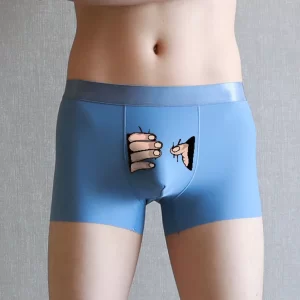
The fashion industry is witnessing a significant shift as men’s lingerie moves from the fringes to the mainstream, thanks in part to the influence of fashion influencers and celebrities. These public figures are redefining traditional norms and showcasing a diverse range of styles and preferences that resonate with modern consumers.
By embracing and promoting men’s lingerie, they are not only expanding the market but also playing a crucial role in its acceptance. This movement is reflective of a broader societal trend towards inclusivity and the breaking down of gender-based fashion barriers.
As influencers and celebrities continue to spotlight men’s lingerie, they contribute to a more open and accepting fashion culture where personal expression and comfort take precedence.
Consumer response: The Growing Demand for Men’s Lingerie and Changing Shopping Patterns
The men’s lingerie market is experiencing a significant transformation, driven by evolving consumer demands and shopping behaviours. The industry has seen a notable shift towards comfort, functionality, and style, with an increasing demand for premium and luxury underwear brands. This trend is supported by a growing awareness of personal grooming and hygiene among men, alongside rising disposable incomes and changing lifestyles.
The market is also witnessing a surge in online shopping, with digital platforms becoming the preferred channel for many due to their convenience and extensive product offerings.
Innovations in fabric technology and design aesthetics have led to a diverse range of styles, including classic, low-rise, and seamless options, catering to a variety of consumer preferences. Moreover, the integration of sustainable materials and eco-friendly manufacturing processes is appealing to environmentally conscious consumers.
The Asia Pacific region, in particular, is expected to see substantial growth, propelled by rapid urbanization, increasing fashion consciousness, and the influence of Western fashion trends. The proliferation of e-commerce platforms in this region provides easy access to international brands, further stimulating market expansion.
The Future of Men’s Lingerie: Predictions and Trends in the Fashion Industry
The fashion industry is witnessing a dynamic shift in men’s lingerie, emphasizing flexibility, sustainability, and innovation. As we move forward, the boundaries of traditional men’s attire are being redefined, with a focus on breaking stereotypes and embracing gender-neutral clothing.
The rise of e-commerce has made sustainable and ethically sourced materials more accessible, reflecting a consumer base that is increasingly conscientious about environmental stewardship. Influences from pop culture, particularly from anime and social media platforms, are shaping the sartorial landscape, introducing a playful and creative edge to men’s lingerie.
The integration of technology in retail, through advanced analytics and AI, is optimizing the shopping experience and tailoring offerings to individual preferences. With a projected market size of USD 94.78 billion by 2024, growing at a CAGR of 8.49%, the men’s lingerie sector is poised for significant growth, driven by these evolving trends and consumer demands.
Conclusion: Embracing Individuality and Equality in the World of Fashion
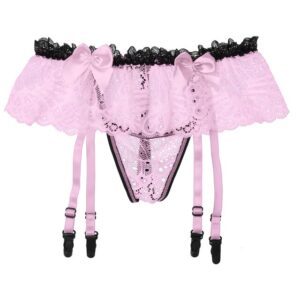
The world of fashion is a vibrant tapestry that reflects the diversity and uniqueness of individuals across the globe. Embracing individuality and equality in fashion means recognizing and the myriad ways in which people express themselves through their attire. It’s about creating inclusive spaces where every person feels represented and respected, regardless of their body type, ethnicity, gender, or personal style.
As we move forward, the industry must continue to break down barriers and foster an environment where creativity flourishes and everyone has the opportunity to shine in their unique way. This commitment to inclusivity not only enriches the fashion landscape but also empowers individuals to wear their identities with pride and confidence.

